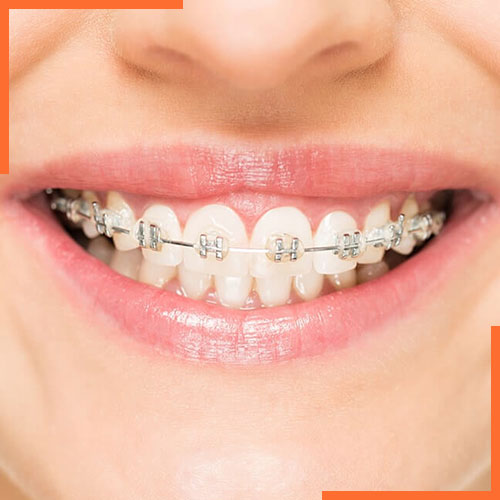

With modern orthodontics, we are able to improve our patients’ bite, straighten their teeth and give them a beautiful smile they could be proud of.
At Boghani Dental ClinicAhmedabad, our Specialist Orthodontist offers a range of orthodontic solutions for both children and adults.
Whether it be metal or ceramic braces, hidden (lingual) braces, or clear aligners like Invisalign and Eon – an orthodontic treatment is sure to improve the aesthetics of your smile, make your teeth fit better and reduce your risk of future dental problems.
Healthy teeth can be moved to an ideal position at any age. With a variety of options that are more discreet and inconspicuous, we see more and more adult patients who come to us for orthodontic treatments. A good bite and well-aligned teeth are a great investment that not only enhances your appearance, but also helps prevent potential dental issues in the future.
Parents are encouraged to bring their child to an orthodontist at age 7.
A check-up allows our orthodontist to identify problems with children’s jaws and emerging teeth while some of their baby teeth are still present. This does not always mean that your child will need to start treatment right away.
If necessary, our orthodontist may recommend an interceptive option to prevent serious bite problems from developing and may make treatment at a later age less complex.
The immediate restoration of a tooth (that needs to be extracted) with implant and implant crown has many benefits. It preserves the existing bone as well as the existing soft tissue around the former tooth (now implant) in the most reliable way showing the most pleasing aesthetic results in the long term.
A tooth extraction especially of upper front teeth is a psychological traumatic experience to most patients. Being able to provide an immediate solution for the patient within one session of 2 hours (from extraction to dental restoration) is perceived very positively.
The only drawback of immediate restoration of implants might be the fact that the patient is not allowed to eat on it for several weeks until the implant body has properly fused (osseointegrated) with the surrounding bone. Any kind of tooth contact with the new implant tooth should be avoided prosthetically in order not to jeopardise the healing. That's why we prefer to use a temporary less precious implant crown first that will be replaced with the permanent highly aesthetic one after a healing time of usually 12 weeks.
Obviously, the patient needs to be seen first for a surgical as well as prosthetic consultation where relevant x-rays and impressions need to be taken for planning of each individual case and were alternative therapies can be discussed.
Already in the second appointment, the surgery (performed under normal local anaesthesia) can take place with immediate placement of implant crown.
Interestingly when implants are inserted immediately into extraction sites the healing-process seems favourably improved. Nevertheless, a little bit of discomfort or pain from the extraction itself with mild swelling and somethings bruising is to be expected.
All patients are prescribed a medication regimen of antibiotics and painkillers for the post-operative days.
Such dental surgeries should be planned according to the patients activity schedule. It is useful to abstain from any physical exercise for 3-5 days but only very few patients, in general, would need days off from work.
Approximately one week after surgery a joint surgical/prosthetic follow up visit will be scheduled to ensure an uneventful healing.
Approximately 12 weeks later, the patient will be seen again for replacement with permanent implant crown. Once the implant is restored, the patient should keep their normal 6-monthly check-ups.